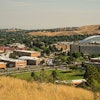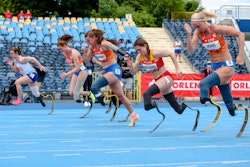Computer-Based Technology Helping Kids With Disabilities Find Their Voice, Say Penn State Researchers
Laptop computers that combine features from popular toys with innovative technology have rapidly accelerated the learning and communication ability of children with disabilities, according to researchers at Pennsylvania State University. The technology could in the future be adapted to aid victims of major accidents and the elderly as well.
According to Dr. Janice Light, a professor of communication sciences and disorders at Penn State, more than 2 million Americans are unable to use speech to communicate, and children are a major component of this population.
“Kids learn and communicate through speech by trying out new words and forming sentences,” says Light. “If they can’t do that due to problems such as autism, Down Syndrome and cerebral palsy, then it is going to be difficult to learn how to read and write, make friends and communicate their needs.”
Computer-based technology that provides speech output is increasingly being used to assist such children in communicating but Light feels it has not yet fully served its purpose.
“The design of many of these systems is really based on how adults think, and the machines are complicated and children take years learning how to use them,” says Light, who presented her findings Feb. 20 at the 2006 annual meeting of the American Association for the Advancement of Science.
“As a result, the children miss several years of a crucial learning period and fall further behind normal children. Due to their impoverished learning environment, they’re really locked in, in a way,” she says.
Light and her colleagues are currently working on a five-year research grant to redesign assistive technology to improve the ability of these children to learn and communicate in a more meaningful way. The key, she says, is to come up with technology that is appealing to children, easy to learn and simple to operate.
“We’ve actually brought in teams of young kids, posed a problem to them of a child who isn’t able to walk and talk and set them loose to build an invention to help such a child,” Light says. The feedback tells researchers the kind of features children value.
“The real key is having fun. And the kids talk about that as they build their inventions. They say things like ‘it has to have smile power,’ they like a lot of bright colors and want to laugh and make burping sounds,” she says.
As an example of such technology, Light showed a colorful toy-like laptop computer fitted with a touch-sensitive screen, using a visual screen display, embedded with “hot spots” that the children can press to produce sounds of laughter and words, and to learn language.
Since very young children are not readers, the idea is to take a child’s experiences and represent it interactively through digital photos of the child, the family or storybook cartoons, she says.
The technology already is proving its mettle. Some 2- and 3-year-olds are showing signs of becoming early readers. And early trials with 15- and 25-month old children show an improvement of about 20 to 50 times in communication skills, as well as a significant increase in vocabulary.
These are probably the youngest children in the world using such technology, according to Light, and she adds that future trials will involve infants with disabilities as young as 8 months old.
“Our goal ultimately is to put the system in front of the child and from the first moment, the child is able to intuitively use it,” she says.
© Copyright 2005 by DiverseEducation.com





















